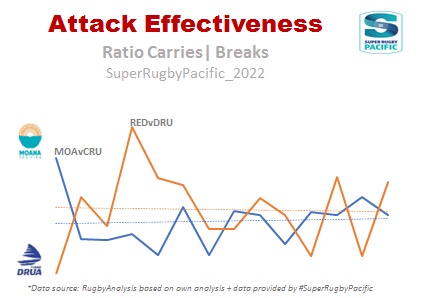'It feels unreal': Drua and Tahs advance to Grand Final as stars bag semi hat-tricks
Fijian Drua will look to complete three titles in a row when they face the NSW Waratahs in the 2024 Buildcorp Super Rugby Women's…
Opinion
The entry of the Pacific franchises into the Super Rugby ecosystem generated a lot of expectations in the field of sports and in business as well. But what really interests us has to do with the sporting performance on Super Rugby.
At first, I thought we were going to see a remake of ‘predators versus prey’, where the young teams had every chance to burst onto the scene playing the role of prey. Fortunately, both Moana Pasfika and Fijian Drua showed their firepower beating established opponents.
Fijian Drua’s first two matches were unsuccessful, but in Moana’s first appearance against the Crusaders the Pacific people shook up multi-time champions from New Zealand in the 14th minute, opening the scoring with an incredible try.
This led me to believe that these teams, as newcomers to SuperRugby, had three fairly clear paths available to them to survive, adapt and develop competitively:
1. Demonstrate capacity for innovation and disruption
2. Strengthen skills already acquired from its origins
3. Both paths at once
With the passing of the first phase I noticed that both Moana and Drua respected a game pattern whose premises were already in the game structure that we know as ‘innate’ in the Pacific Island teams. We could briefly characterize it as follows:
To better illustrate the idea, in the clip below we can see Moana’s performance against the Force through the development of this Sealed Possession or non-expansive play.
In this game the Sealed Possession ratio was 46%, but in the general accumulated Super Rugby it was 39%, the highest of the New Zealand holding and the second best in the competition after Fijian Drua.
Could we say that the island teams have increased the quality of their game throughout Super Rugby Pacific?
At first we can think that they have enhanced their game and have strengthened their core skills, to later add skills that we could consider ‘extended’ or ‘non-priority’, based on the acceleration of the combination of Passes/Breaks and in the kicking game.
The graph below shows the evolution of the established ratio between the carries executed and the generation of breaks in Moana and Drua, where we can see how they have strengthened their central skills in attack and the high points obtained against the Reds (8.9 %) and Crusaders (7%).

By establishing this approach we can assume that the Carries/Breaks ratio was growing as they progressed in 2022. Seen in a little more detail, one of Drua’s outstanding strengths has been the post-contact situations, where players prepared in the technique and in the physicality of the contact, have gained a considerable amount of meters in the opponent’s field.
On the other hand, Moana had a more developed foot game structure, through which she scored 19% more kicks than Drua. In the graph below we see that Moana Kicked Possession behaved in a sustained manner and with a slight increasing trend, while the Drua possession was more irregular and with a tendency to decrease.

A quick reading of Moana and Drua’s course leads us to think of a campaign in which they positioned their game based on extreme physicality, little expansion and focused on maintaining control of the center of the court. In the next Super Rugby season, we’ll find out how they have developed their core skills and how they have expanded their work to other areas of the game.